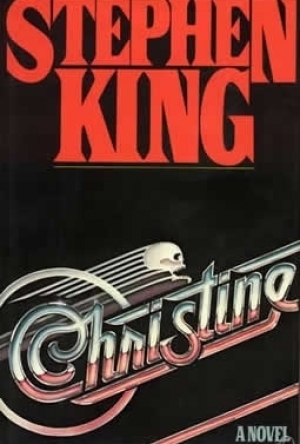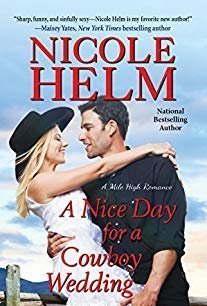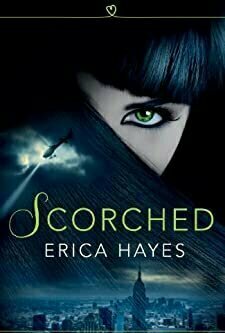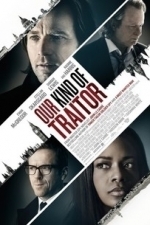MaryAnn (14 KP) rated A Rumored Fortune in Books
Mar 5, 2019
My Thoughts: This is the second novel for Author Joanna Davidson Politano and her books only get better and better! A story of intrigue, suspense, love, and lessons to be learned. Tressa and her mother are summoned home early from a trip abroad. Assuming that her father has called them home, Tressa is excited to see him again. When they do finally get home, she is met by a handsome stranger who comes to her aid and brings her to the castle only to find that her father has died. As she learns that Trevelyan has run into money problems she quickly starts searching for the hidden treasure; the only thing is, is that she isn't the only one. At the world of her father's death, everyone wants a piece of the treasure.
This is a gripping story that keeps the reader entertained throughout. It is full of twists and turns, that keeps the reader on edge wondering what will happen next.
The characters are well developed and very believable, as they interact with one another through the story-line,
At the beginning of each chapter, there is a nugget of wisdom that deals with horticulture and raising grapes but it also has a deeper meaning for what goes on in life. The characters also supported a great faith in God which is a good example for us in our own times of despair.
Tressa is a loveable character, and well portrayed in the novel. I can't imagine how hard it would be to trust in a time when it seems all people wanted was money. I think that she did an amazing job, with a few lessons learned.
I highly recommend this novel. I will certainly be looking for more from this author.
I received this book free from the publisher. I was not required to write a positive review and the opinions I have expressed are my own. I am disclosing this in accordance with the Federal Trade Commission’s 16 CFR, Part 255 : “Guides Concerning the Use of Endorsements and Testimonials in Advertising.”
TheBookMother (105 KP) rated Christine in Books
May 26, 2019
Now, I do feel quite conflicted in critiquing the master that is Stephen King especially as it's not all positive. It's probably the same feeling if you kicked your Nan or when you've hidden your son's favourite toy that drives you crazy and watch him scour the house for it for days on end.
It started off in true King fashion. I've read a few of his repertoire including the classics. I have come to recognise his tone and the way he sets the scene.
We begin by meeting Dennis who is recalling past events which include his friend Arnie and his obsession with his new car Christine. We soon find out Christine is a bit more than your average first car and anyone who seems to cross Arnie will feel her very gory and murderous wrath. We learn that her previous owner LeBay begins to possess Arnie. Dennis sets out to try and save his friend from the evil clutch(es) (I had to sorry!) of Christine and stop her once and for all.
Tense, descriptive with an air of paranormal/ supernatural you generally know what you're getting with King and you know there will tend to be a twist or scare along the way.
However, I did find this abit of a slow burner and not what expected it to be.
I think it could be because this is 20+ years old and I am probably desensitised by slashers it did feel quite cliché in places.
I did at times feel slightly confused as we were introduced to Christine the possessed car but then we learn it's all to do with Lebay taking over and even ageing Arnie. It did remind me abit of Ghost Rider.
I enjoyed the music lyrics at the beginning of each chapter and throughout as it really did help set scene and help with showing the difference between Arnie and Lebay's ages.
I have to admit I was distracted alot and do put it down frequently but I did pick up and finish it eventually.
I normally finish a book in 2-3 days (children, work and life permitting!) But this took a while longer. Perhaps, as I felt it was a tad stagnant in places.
It was never the less an okay read, it's a good slasher come supernatural story but one I did think I would have enjoyed alot more.
Carma (21 KP) rated A Nice Day for a Cowboy Wedding (A Mile High Romance #4) in Books
Jun 17, 2019
Shane Tyler is a fixer, he fixes his ranch, his siblings, his mother. The one thing he couldnt fix has haunted him is a secret from when he was 12 years old. When the pretty new wedding planner shows up at their ranch to help his Mom with her marriage he figures out a way to get this wedding stopped once and for all.
Cora and Shane are both coming into this with the same sort of back issues in their lives but from completely different places. Cora has nothing but fixers in her life while Shane has nothing but people needing saved in his. Or so they both think. On the wedding front, Shane wants to get his mother to see the man she wants to marry is wrong for her and Cora does everything in her power to make Shane see he is wrong. Can they work together to prove their respective points, while navigating this slippery slope, despite being wildly attracted to each other?
I have been a fan of Nicole Helms writing for a while now and this one certainly doesnt disappoint earning 4 1/2 stars. Im usually pretty good at figuring out a storyline and I was greatly relieved to see that one point I was sure would happen, did not. Cora and Shane though both appearing confident in themselves were very much the opposite and I liked the way they both realized they needed to make that change in themselves. Moms definitely do know best always, even flawed ones like Cora and Deb Tyler doesnt miss a trick. Throw in the awesome Grandma Maisey, her sword collection and a possible love connection with Skeet in the future (please please) and this book is wonderfully all family.
I received an advance copy from Netgalley without any expectation for review. Any and all opinions expressed are my own. Another great read from Ms Helm and I cant wait to read the next chapter(s) to come in Gracely, Colorado.

Swanson's Family Med. Review
Medical and Book
App
Swanson's Family Medicine Review efficiently summarizes all the latest know-how in primary care and...
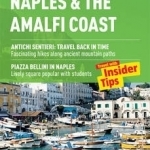
Naples & the Amalfi Coast Marco Polo Guide
Book
Marco Polo Naples & the Amalfi Coast: the Travel Guide with Insider Tips Experience all of Naples &...
Aesthetics: A Reader in Philosophy of the Arts
Book
Aesthetics: A Reader in Philosophy of the Arts, 4th Edition contains an extensive selection of...
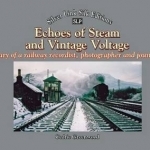
Echoes of Steam and Vintage Voltage: Diary of a Railway Recordist, Photographer and Journalist
Book
This is a vivid, contemporary account of the sights and sounds of the last two years of commercial...
Leanne Crabtree (480 KP) rated Scorched (Sapphire City, #1) in Books
Jan 6, 2021
The cover drew me in. Isn’t it a thing of beauty?
When I requested this I assumed it would be more paranormal than it was. In fact it was more fantasy than anything. People who go around using their powers–known as the Augmented–to stop evil, dressed up in disguise. Superheroes?
I was quickly drawn into the story within the first chapter when we see Verity struggle to remember who she is and that she isn’t a bad person after being tortured by her arch nemesis’ minions in a mental asylum and her escape from there. She runs to a safe house and bumps into her brother who tells her she’s been MIA for nine months.
Can I just stop there for a minute and mention the Fortune siblings’ names? The eldest is Equity, then Adonis, then there is Verity and baby brother Chance. I love their names! If they don’t scream Superhero, I don’t know what does :D
Anyway, back to the story. On Verity’s return to her family, things don’t go smoothly and she realises things don’t add up. Is there a conspiracy in the works?
Throughout the story we see flashbacks of the night that Verity was captured and it is all very intriguing. At just over half way through I had my suspicions of what they would end up showing and I was right in my assumption about what some of it would show. I’m not going into detail as it would totally ruin in for you.
We meet a lot of other Augmented people: Iceclaw, Weasel, Glimmer. Some are good and some not so much. I liked the description of each and how they earned their names. They were thought out and I could picture them easily.
I grew to really like Glimmer, he seemed like a really nice guy. Verity, on the other hand, I couldn’t decide about. She seemed to like pushing people away and was full of self-loathing a lot of the time, unable to justify some of the things she’d done.
To start with I didn’t mind the lack of romance, as I was so caught up in the drama surrounding Verity, but the more I read the book the more I missed it. There was a bit; some kisses exchanged and nice words but nothing like the amount I like to read in books and that’s reflected in my rating.
It was full of action and intrigue. I liked the superhero vs. bad guys aspect. If you like the sound of it, then I’d suggest you go grab a copy.
Darren (1599 KP) rated Our Kind of Traitor (2016) in Movies
Sep 16, 2019
Performances – The performances through the film show us just what Le Carre does with his characters, he gives them good moments, without making them stand out. McGregor is good, but you feel a younger up and comer would have been perfect here, Harris is good and doesn’t put a foot wrong, while Skarsgard enjoys his role, shady but loyal. Damian Lewis brings back his true English role which at times does feel weird knowing how often he has been an American character recently.
Story – The story comes from a John Le Carre novel, so instantly we know we are going to get a thriller that keeps us guessing on what everyone’s motivation will be. The idea that a normal couple get mixed up in the middle of an international information exchange is different and does work for the film because it helps us stay on edge thinking and wondering if they do have a bigger involvement. The story does feel like that one moment to make it great is missing, as everything does end up feeling just normal and good only.
Crime – The crime side of the film follows a criminal looking for a safe way out of the life for his family in exchange for bringing down the mafia’s dealings in London.
Settings – The film splits the settings between London, for the deals, Morocco for the exchanges and the final location for the next chapter of the lives, they work because they show how this world would operate.
Scene of the Movie – The escape.
That Moment That Annoyed Me – It lacks the edge of your seat style of Le Carre novels have given us.
Final Thoughts – This is a solid thriller even if it lacks that final factor to make it one of the best ones, it does the by the book material well, but never develops the characters enough to understand the situation they put themselves in.
Overall: Simple thriller.

B737 Cockpit Companion
Education and Navigation
App
B737 Cockpit Companion for iPad is a conversion of Bill Bulfer's B737 NG Cockpit Companion book...

